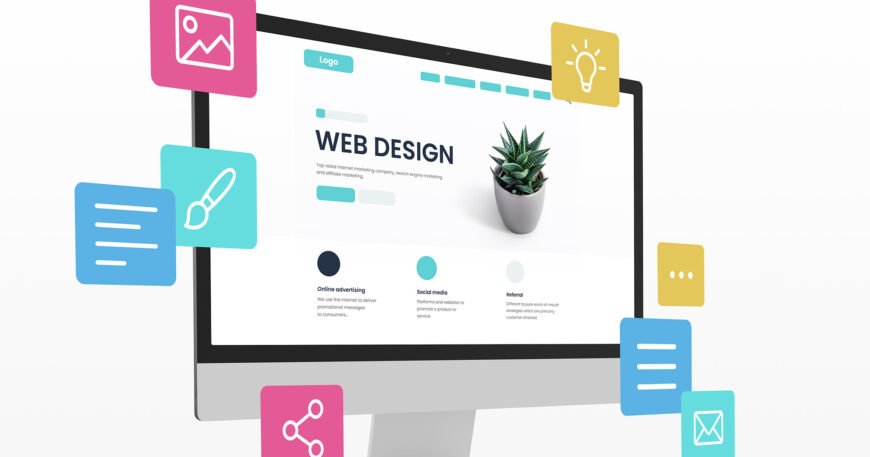The design of a health website is crucial to its success. Not only does it serve as a first impression for visitors, but it also plays a significant role in building trust and encouraging engagement. With the increasing competition in the health industry, a creative and user-friendly design can set your site apart, making it more appealing to visitors.
Why Design Matters in Health Websites
The First Impression and Trust
When users visit a health website, the design immediately influences their perception. A well-organized, aesthetically pleasing design conveys professionalism and reliability. Imagine stepping into a messy doctor’s office versus a clean, well-decorated one; the latter is more likely to earn your trust.
User Engagement and Retention
Effective design keeps users engaged. Interactive elements, intuitive navigation, and appealing visuals encourage users to stay longer and explore more. For health websites, this could mean more users accessing critical health information, booking appointments, or utilizing other online services.
Accessibility and Usability
A well-designed health website is accessible to everyone, including those with disabilities. Features like keyboard navigation and screen reader compatibility ensure that all users can access essential health information easily.
Key Elements of Effective Health Website Design
Clear Navigation
Intuitive Menus
Menus should be easy to find and navigate. Use clear labels and a logical structure so users can quickly find the information they need.
Search Functionality
A robust search function helps users locate specific information without hassle, improving their overall experience on the site.
Responsive Design
Mobile Compatibility
With many users accessing websites on mobile devices, responsive design ensures your site looks and functions well on all screen sizes.
Cross-Browser Support
Your website should perform consistently across different browsers, providing a seamless experience for all users.
Visual Appeal
Color Schemes and Themes
Use calming and professional color schemes that resonate with your brand and appeal to your target audience.
High-Quality Images and Videos
Incorporate high-resolution images and videos that enhance the content and provide a visual representation of the information.
Informative Content
Readable Text
Ensure your text is readable, using legible fonts, appropriate font sizes, and sufficient line spacing.
Helpful Graphics and Infographics
Visual aids like infographics can make complex information more digestible and engaging for users.
Innovative Design Ideas for Health Websites
Personalized User Experience
User Profiles and Dashboards
Allow users to create profiles where they can access personalized content, track their health metrics, and manage appointments.
Personalized Content Suggestions
Based on user behavior and preferences, provide tailored content recommendations to keep users engaged and informed.
Interactive Features
Symptom Checkers
Interactive tools like symptom checkers help users understand potential health issues and encourage them to seek professional advice if needed.
Virtual Consultations
Offer virtual consultations where users can speak with healthcare providers online, enhancing accessibility and convenience.
Educational Resources
Video Tutorials and Webinars
Provide video content that educates users on various health topics, making learning more engaging.
Comprehensive Articles and Guides
Offer detailed articles and guides on health-related topics to serve as a valuable resource for users seeking information.
Community Engagement
Forums and Discussion Boards
Create spaces where users can discuss health topics, share experiences, and support each other.
Social Media Integration
Integrate social media to encourage sharing of content and engagement with a broader audience.
Incorporating Accessibility in Health Website Design
Text Alternatives
Alt Text for Images
Use descriptive alt text for images so users with visual impairments can understand their context through screen readers.
Transcripts for Videos
Provide transcripts for video content, ensuring that users who are deaf or hard of hearing can access the information.
Keyboard Navigation
Skip Navigation Links
Implement skip navigation links to help keyboard users bypass repetitive content and navigate efficiently.
Focus Indicators
Use focus indicators to highlight the active element on a page, aiding users who rely on keyboard navigation.
Best Practices for Health Website Design
Consistent Branding
Logo Placement
Place your logo prominently, typically in the top left corner, to enhance brand recognition and trust.
Brand Colors and Fonts
Use consistent brand colors and fonts throughout the site to reinforce your brand identity.
Fast Loading Speeds
Optimized Images and Videos
Compress and optimize images and videos to reduce load times and improve site performance.
Efficient Coding Practices
Use clean and efficient coding to ensure your website runs smoothly and loads quickly.
Secure and Private
SSL Certificates
Implement SSL certificates to encrypt data and protect user information.
Data Encryption
Use encryption methods to secure user data and maintain privacy, especially when handling sensitive health information.
SEO Considerations for Health Websites
Keyword Research
Understanding User Search Behavior
Analyze how users search for health information and incorporate relevant keywords into your content.
Long-Tail Keywords
Use long-tail keywords to target specific queries and improve your chances of ranking higher in search results.
On-Page SEO
Meta Tags and Descriptions
Craft compelling meta tags and descriptions to improve click-through rates from search engine results.
Header Tags and Keyword Placement
Use header tags to organize content and strategically place keywords to enhance SEO.
Off-Page SEO
Backlink Strategies
Develop a strategy for earning backlinks from reputable sources to boost your site’s authority and ranking.
Social Signals
Engage on social media to drive traffic to your site and improve its visibility in search engines.
Case Studies: Successful Health Website Designs
Example 1: Mayo Clinic
Overview of Design Elements
Mayo Clinic’s website features a clean layout, easy navigation, and extensive educational resources.
User Feedback and Engagement
Users appreciate the site’s reliability and the wealth of information available.
Example 2: WebMD
Overview of Design Elements
WebMD offers interactive tools, personalized content, and a user-friendly interface.
User Feedback and Engagement
Visitors find the interactive features particularly useful for managing their health.
Example 3: Healthline
Overview of Design Elements
Healthline’s design emphasizes readability, with clear sections and helpful visuals.
User Feedback and Engagement
Users praise the site’s comprehensive articles and engaging multimedia content.
Conclusion
Designing a health website requires a blend of aesthetics, functionality, and user-centric features. By focusing on clear navigation, responsive design, visual appeal, and accessibility, you can create a site that not only attracts visitors but also keeps them engaged. Incorporate innovative ideas like personalized user experiences and interactive tools to stay ahead in the competitive health industry. Remember to follow best practices for branding, speed, and security, and optimize your site for SEO to reach a wider audience.
FAQs
How can I make my health website more engaging?
To make your health website more engaging, incorporate interactive features like symptom checkers, virtual consultations, and forums. Provide personalized content and educational resources to keep users interested.
What are the best colors for a health website?
The best colors for a health website are often calming tones like blues and greens, which convey trust and professionalism. It’s important to align your color scheme with your brand identity.
How do I ensure my health website is accessible to all users?
Ensure accessibility by providing text alternatives for images and videos, supporting keyboard navigation, and using focus indicators. Regularly test your site with accessibility tools.
What features are essential for a modern health website?
Essential features include responsive design, clear navigation, a robust search function, interactive tools, educational resources, and user engagement elements like forums and social media integration.
How can I improve the SEO of my health website?
Improve SEO by conducting keyword research, optimizing on-page elements like meta tags and headers, developing a backlink strategy, and engaging in social media to increase visibility.





